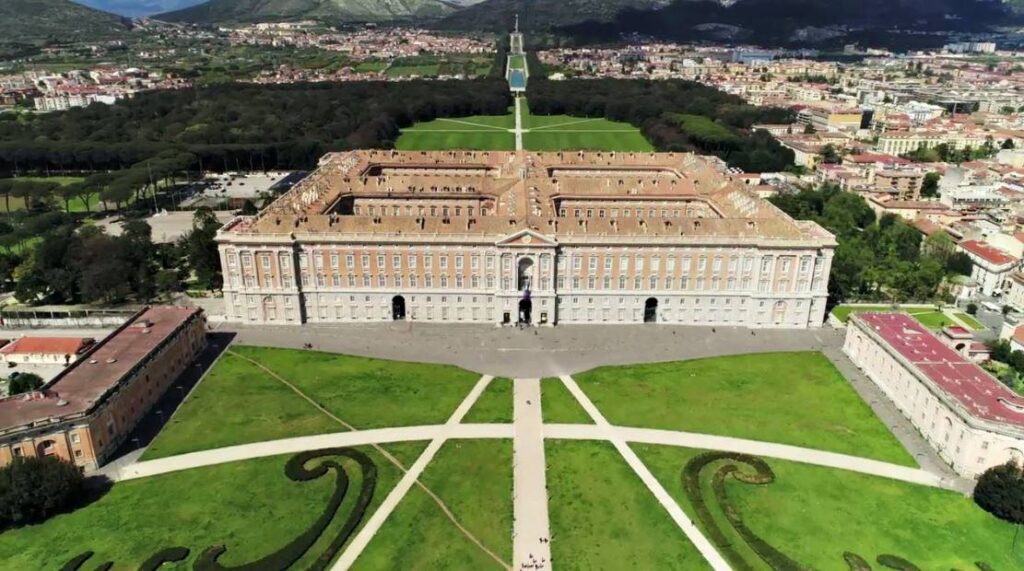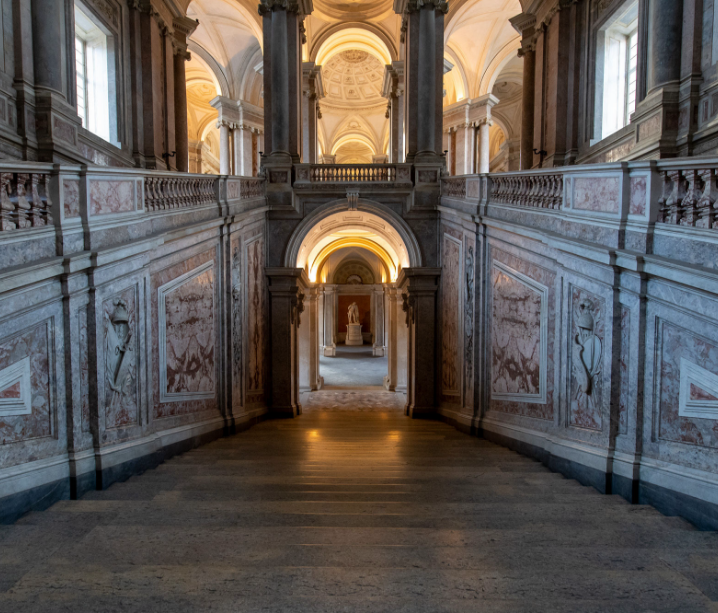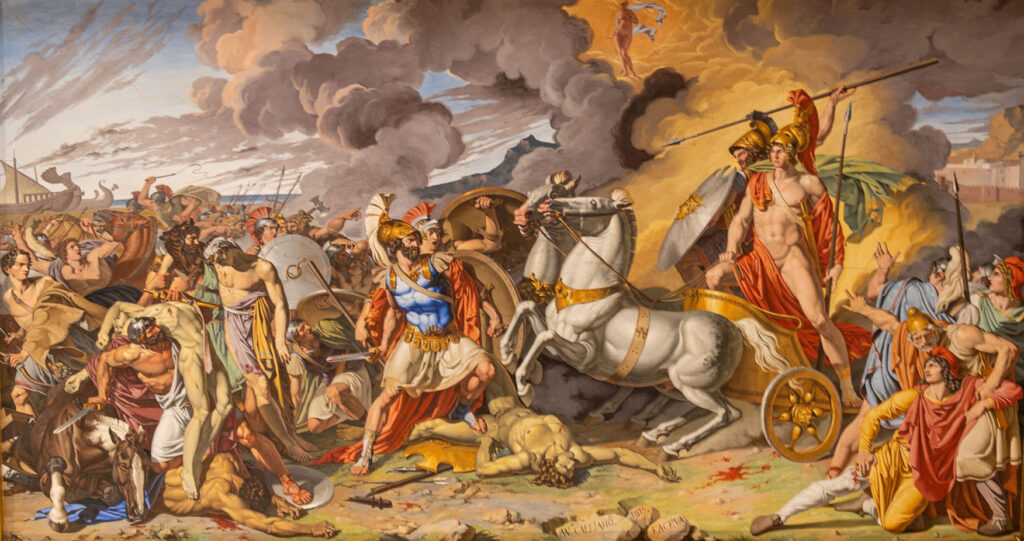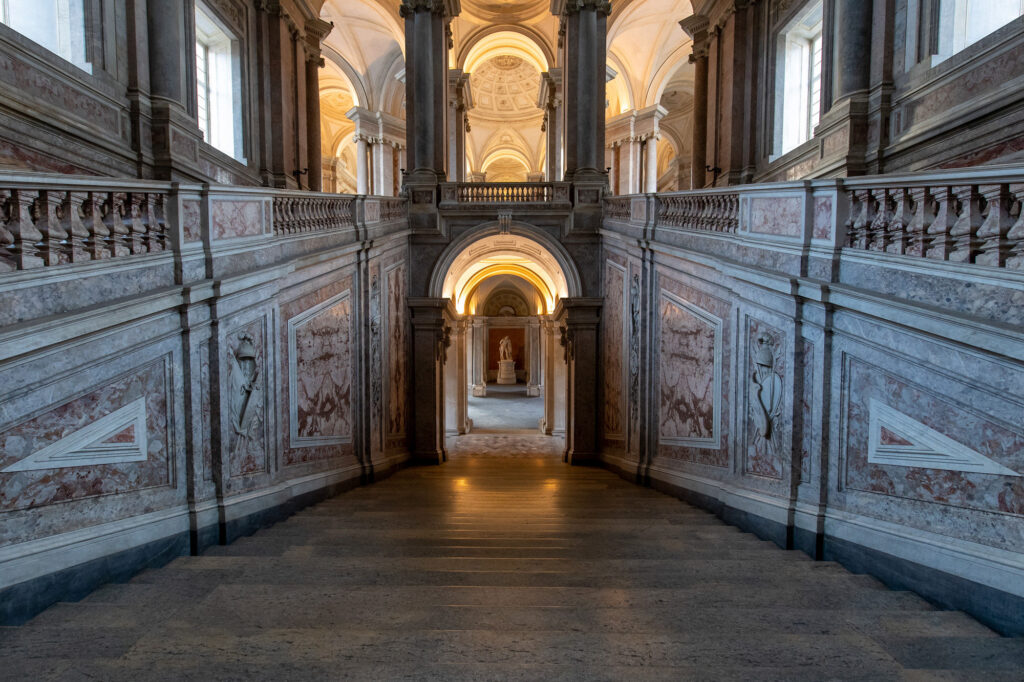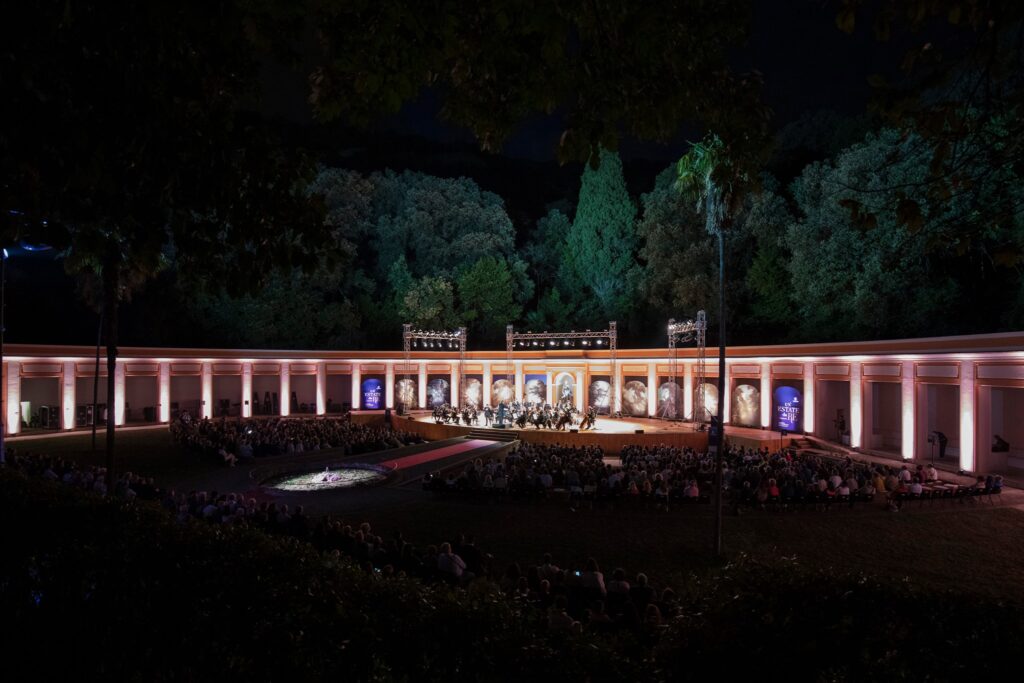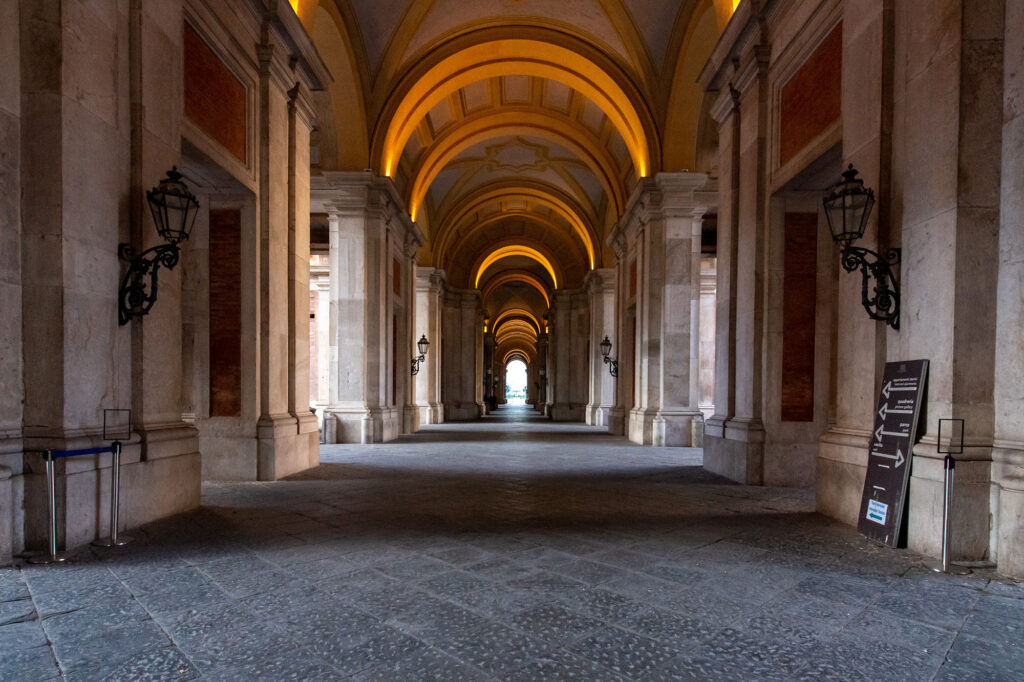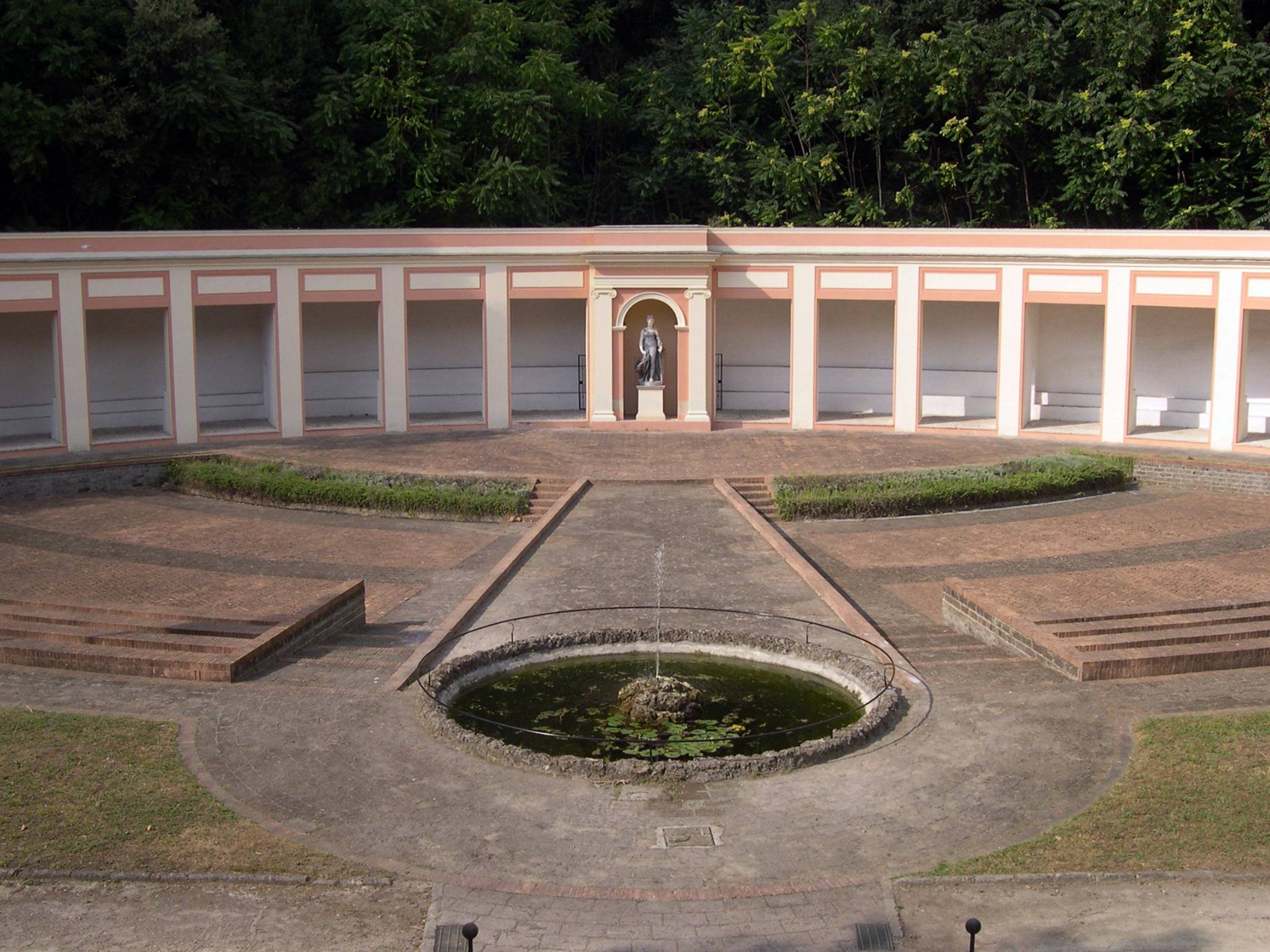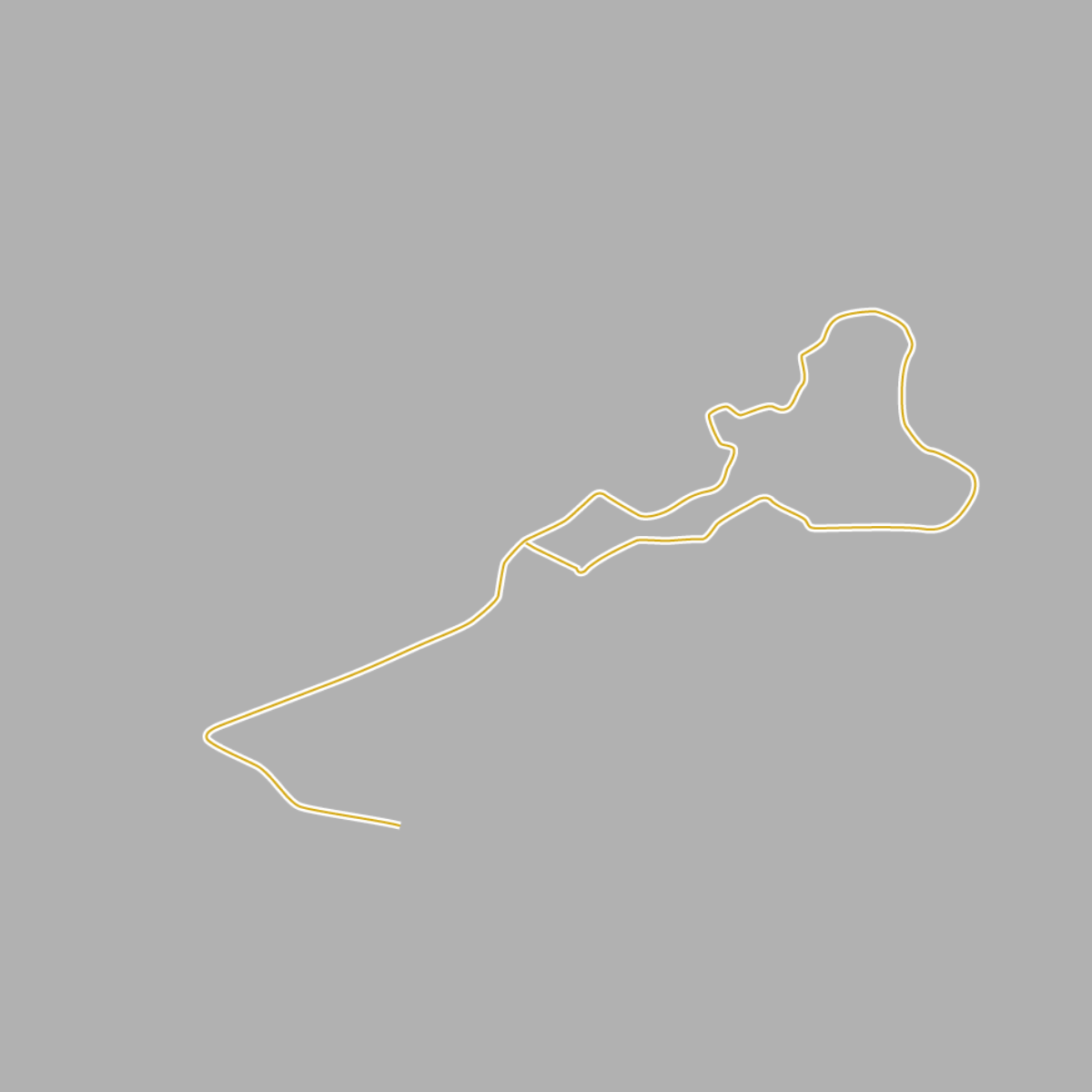From honey production to concerts under Flora’s protection
In 1805 the area that Luigi Vanvitelli had designated as a water collection basin was used for the breeding of bees and honey production. In 1826, with the construction of the current neoclassical hemicycle, the Aperia was transformed into a greenhouse. Today, during the summer season, it hosts a rich series of concerts and shows. Located in the central niche, a female statue of archaeological origin in polychrome marble, called Flora, welcomes the visitors. The statue comes from the Farnese Collections however it is a Roman copy of a Greek original, probably integrated by the Caserta sculptor Angelo Solari, at the beginning of the nineteenth century.
See the map

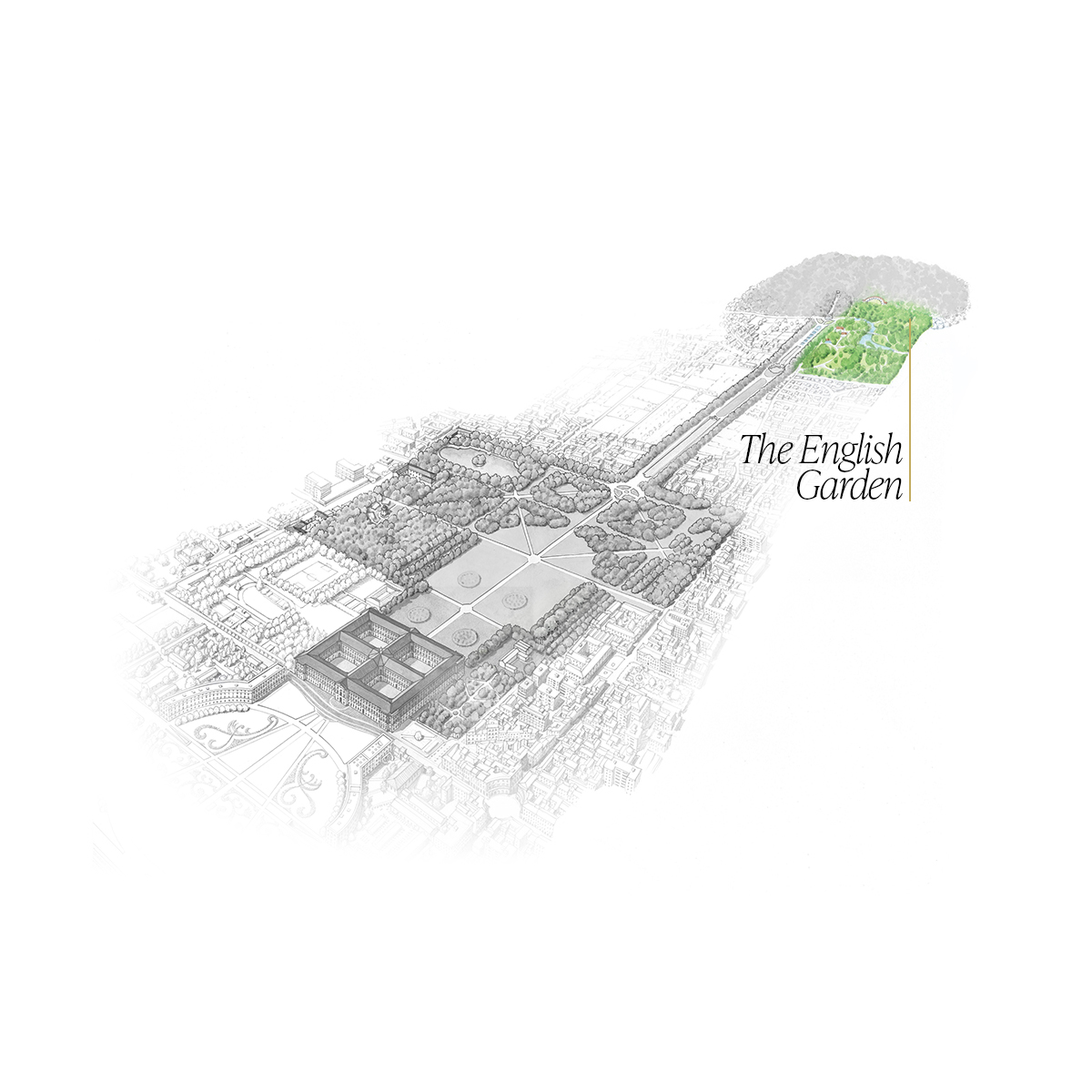

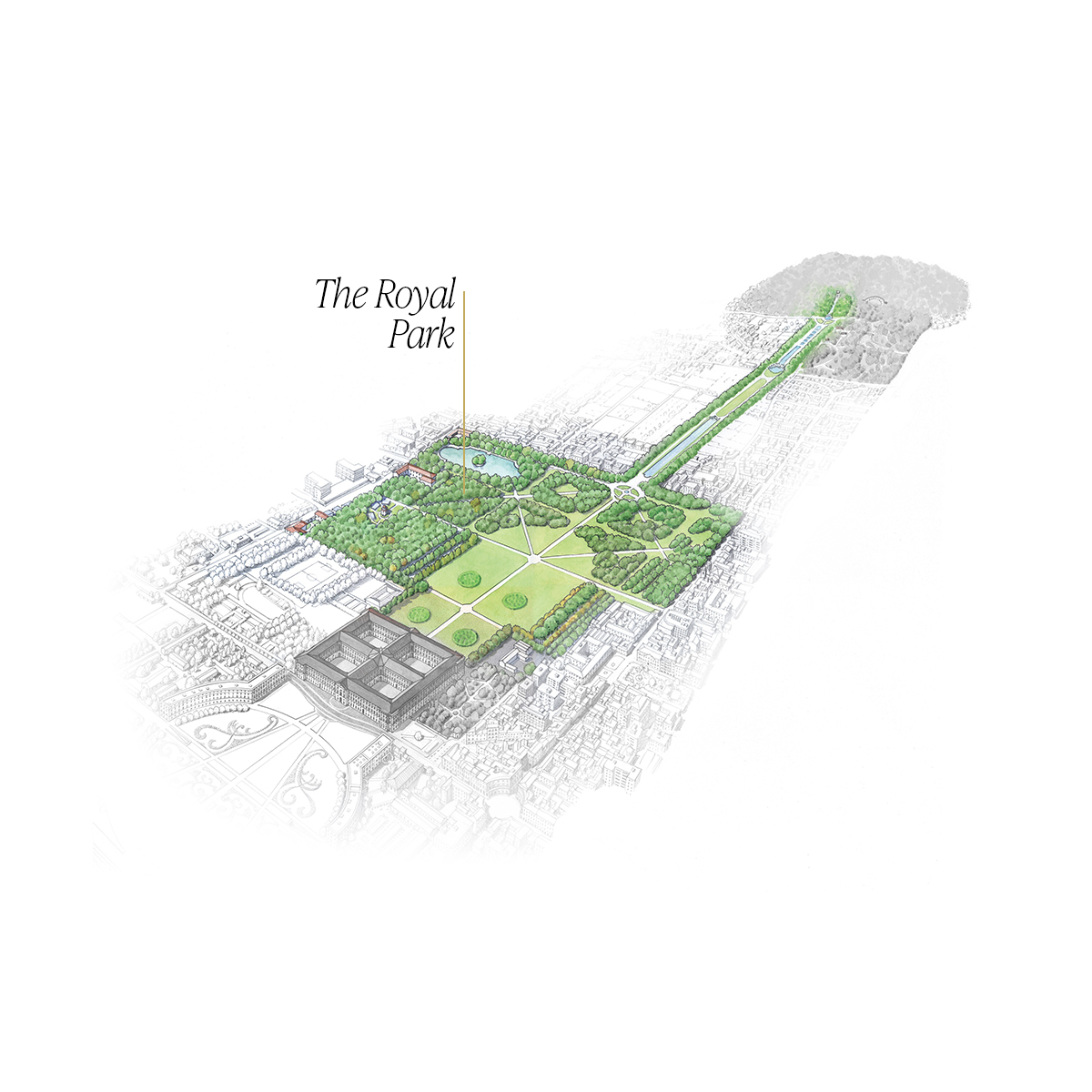
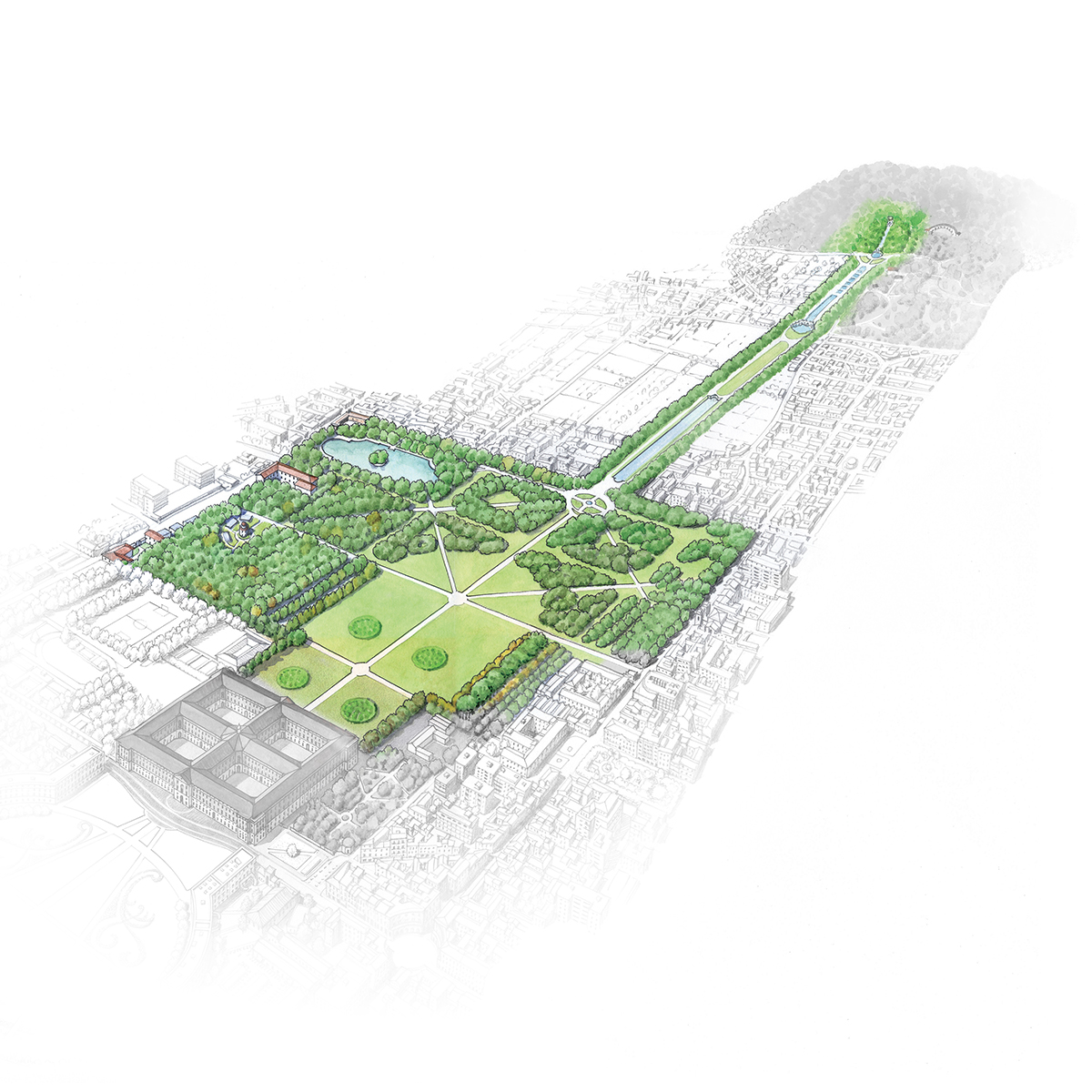
 Via d'acqua
Via d'acqua Castelluccia
Castelluccia Peschiera
Peschiera The Fountain of Dolphins
The Fountain of Dolphins The Fountain of Aeolus
The Fountain of Aeolus The Fountain of Ceres
The Fountain of Ceres The Fountain of Diana and Actaeon
The Fountain of Diana and Actaeon The Fountain of Venus and Adonis
The Fountain of Venus and Adonis The waterfall and Torrione
The waterfall and Torrione The Bosco Vecchio (Old Wood)
The Bosco Vecchio (Old Wood) The Margherita Fountain
The Margherita Fountain







1
 Via d'acqua
Via d'acqua2
 Castelluccia
Castelluccia3
 Peschiera
Peschiera4
 The Fountain of Dolphins
The Fountain of Dolphins5
 The Fountain of Aeolus
The Fountain of Aeolus6
 The Fountain of Ceres
The Fountain of Ceres7
 The Fountain of Diana and Actaeon
The Fountain of Diana and Actaeon8
 The Fountain of Venus and Adonis
The Fountain of Venus and Adonis9
 The waterfall and Torrione
The waterfall and Torrione10
 The Bosco Vecchio (Old Wood)
The Bosco Vecchio (Old Wood)11
 The Margherita Fountain
The Margherita Fountain
Beyond the Royal Palace

1. Via d'acqua2. Castelluccia3. Peschiera4. The Fountain of Dolphins5. The Fountain of Aeolus6. The Fountain of Ceres7. The Fountain of Diana and Actaeon8. The Fountain of Venus and Adonis9. The waterfall and Torrione10. The Bosco Vecchio (Old Wood)11. The Margherita Fountain

Beyond the Royal Palace



